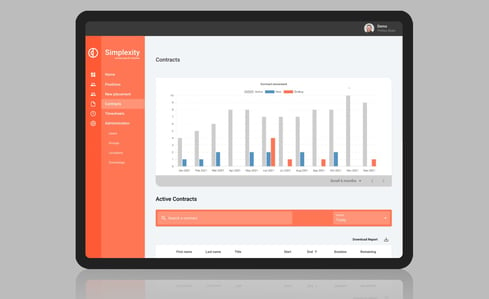In the aftermath of COVID-19, businesses are recognising the advantages of employing freelance workers to bolster their operational activities. The advantages are clear-cut, hiring contractors enables geographical flexibility, minimises payroll expenses, and introduces adaptability into your processes.
However, this strategy comes with a significant drawback: the misclassification of workers. According to certain estimates, up to 30% of American employers have incorrectly categorised at least one employee as an independent contractor.
Hiring contractors carries an inherent risk of misclassification. Additionally, in the US, nearly 10% of workers are misclassified and 10-20% of businesses have misclassified an employee.
Misclassifying your workforce can lead to severe consequences, including fines, penalties, legal complications, and harm to your corporate reputation. Keep reading for a comprehensive overview of the repercussions associated with misclassifying employees.
What constitutes employee misclassification?
Employee classification entails defining the legal status of your workforce according to government regulations. Each country establishes its guidelines regarding the classifications available to workers. However, in general, workers are typically categorised as either employees or independent contractors.
Why does this classification matter? It's straightforward: employees are entitled to a broader range of benefits compared to contractors. When you inaccurately classify an employee as an independent contractor, they are deprived of these benefits.
Depending on the jurisdiction, these benefits may include:
- Minimum wage
- Overtime pay
- Paid time off (PTO)
- Sick pay
- Maternity/paternity leave
- Health insurance coverage
- Protection against unjust termination
Consequences of misclassifying employees
Misclassifying employees is a grave concern, and the repercussions can be profound. To underscore this point, we've compiled a selection of headlines from the United States alone over the last five years:
- 2020: Ridesharing giant Uber agreed to a $20 million settlement to resolve a lawsuit filed by drivers in California and Massachusetts
- 2023: Sports retail magnate Nike faced potential tax fines amounting to $530 million for misclassifying numerous temporary office staff
- 2022: A Virginia-based construction staffing firm was mandated to reimburse $278,073 in owed wages to over 200 workers who were misclassified
- 2019: IT consulting firm Infosys was fined $800,000 for misclassifying workers and committing tax fraud
Penalties for Misclassifying Employees
What are the main tax risks that may arise for contingent workers?
The main tax risk is the risk of misclassification. If the Australian Taxation Office (ATO) or State Revenue Office finds that an individual is an employee, this will lead to liability for:
- Failure to withhold Pay-As-You-Go (PAYG) from worker payments
- Failure to make superannuation contributions
- State payroll tax for employees and individual contractors (unless an exemption is available)
How to accurately classify workers in 2024
Companies often face more substantial fines and penalties when they intentionally misclassify their workers. However, fines for employee misclassification can still occur even if the misclassification was unintentional.
Here's how to avoid such situations in 2024:
- Familiarise yourself with the regulations in your state: Worker classification laws vary from one country (and state) to another. It's essential to comprehend the laws applicable to your location to ensure compliance. Beware: regulations change frequently, and ignorance of recent updates won't excuse non-compliance if you're penalised.
- Conduct regular worker classification audits: The dynamics of your arrangements with workers may evolve. What starts as a legitimate contractor-client relationship could eventually resemble an employment agreement. Regularly assessing the status of each worker on your roster helps ensure accurate classification.
- Seek guidance from local legal professionals: Employment and tax laws can be complex, especially with frequent legislative changes. Collaborating with legal experts familiar with the regulations in your jurisdiction can help prevent employee misclassification errors.
- Develop comprehensive contractor agreements: While worker classification is primarily determined by actual treatment rather than contractual terms, well-crafted independent contractor agreements serve as reminders of the intended working relationship for both parties.
- Provide training to managers on misclassification: The degree of control exerted over a worker's tasks is a key factor in determining their classification. Managers should understand appropriate behaviour when overseeing workers to avoid unintentional misclassification. Thorough training can help prevent misclassification incidents.
- Transition misclassified contractors to employees: If any misclassified employees are identified, they should be converted to employee status if you intend to continue engaging with them. Keep in mind that failing to take action could result in fines, penalties, and retroactive payments of wages, benefits, and taxes for the period of their employment. Simply terminating the relationship isn't a resolution.












_11zon%20(1).jpg?width=302&height=124&name=linkedin-sales-solutions-vqWWOnA6--M-unsplash%20(2)_11zon%20(1).jpg)






